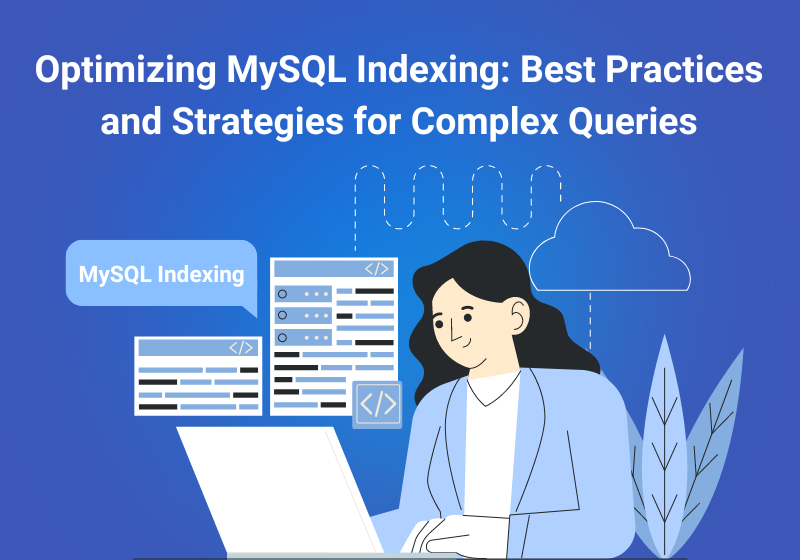
MySQL indexing stands as a cornerstone in database management, pivotal for optimizing performance and ensuring efficient data retrieval. However, navigating through the complexities of indexing, especially when faced with special cases like querying -1 values, requires a nuanced understanding.
In this comprehensive guide, we will delve into the intricacies of MySQL indexing, exploring best practices for optimization and addressing common challenges.
Understanding MySQL Indexing
MySQL employs indexes to swiftly locate and retrieve rows from tables based on indexed column values. By structuring data in an organized manner, indexes drastically reduce query execution time, thereby enhancing database performance. Notable index types in MySQL include B-tree indexes, suitable for a wide array of scenarios, and hash indexes, ideal for exact match queries.
Best Practices for Index Optimization
To optimize MySQL indexing and bolster query performance, it’s crucial to adhere to the following best practices:
- Identify frequently queried columns:
- Prioritize selective columns:
- Use composite indexes strategically:
- Regularly monitor and maintain indexes:
Analyze database queries to pinpoint columns frequently utilized in WHERE clauses, JOIN conditions, or ORDER BY clauses.
Prioritize indexing columns boasting high selectivity, indicating a broad range of distinct values. This ensures the index effectively narrows down the search space.
Leverage composite indexes, comprising multiple columns, to enhance query performance for multi-column queries. However, exercise caution to avoid creating excessively large composite indexes, which may incur overhead.
Periodically review the database schema and query patterns to identify opportunities for index optimization. Additionally, monitor index usage and fragmentation to ensure optimal performance.
Addressing Challenges with Querying -1 Values
In certain scenarios, querying specific values, such as -1, may pose challenges. To effectively tackle issues related to querying -1 values in MySQL, consider the following steps:
- Verify data integrity:
- Review collation settings:
- Avoid selective queries:
- Consider index prefix:
- Monitor query performance:
Ensure -1 values are correctly stored in the database and aren’t erroneously treated as NULL values.
Check the collation settings of indexed columns to ensure alignment with query case sensitivity requirements.
Review queries to prevent unintentional exclusion of -1 values.
If -1 values are part of a multi-column index, confirm the index adequately covers these values.
Regularly monitor query performance involving -1 values to identify potential optimization opportunities.
Conclusion
Optimizing MySQL indexes is paramount for maintaining peak database performance and addressing specific query requisites. By adhering to best practices for index optimization and effectively addressing challenges such as querying -1 values, database administrators can ensure efficient data retrieval and overall system performance.
Example Syntax for Creating Indexes
Syntax for Creating an Index:
CREATE INDEX index_name ON table_name (column_name [ASC|DESC]);
- index_name: Name of the index.
- table_name: Name of the table.
- column_name: Name of the column for indexing.
- [ASC|DESC]: Optional parameter for specifying index order.
Explanation of Ascending and Descending Indexes:
- Ascending Index (ASC): Default order; values sorted from smallest to largest.
- Descending Index (DESC): Explicitly specified order; values sorted from largest to smallest.
Special Case: Querying -1 Values
After applying an index, the result set differed significantly between ascending and descending order queries. Let’s break down the scenario:
- Ascending Order (ASC): Only a few records were returned, indicating inefficient filtering of “-1” values.
- Descending Order (DESC): Significantly more records were returned, suggesting prevalent “-1” values towards the end or ineffective filtering.
Possible Causes
Several factors may contribute to this discrepancy:
- Data Distribution: Skewed distribution with “-1” values concentrated towards the end.
- Index Structure: Suboptimal index structure for efficient filtering of “-1” values.
- Index Type: Inappropriate index type for query requirements or data distribution.
Solutions and Recommendations
To optimize index usage in such scenarios:
- Review Index Structure: Ensure alignment with query requirements and optimize for efficient filtering of “-1” values.
- Analyze Data Distribution: Understand prevalence and distribution of “-1” values to tailor indexing strategies.
- Experiment with Index Types: Explore different index types to determine the most suitable for query and data distribution.
By following these recommendations and understanding the intricacies of MySQL indexing, database administrators can unlock optimal performance and efficiently handle special cases like querying -1 values.
